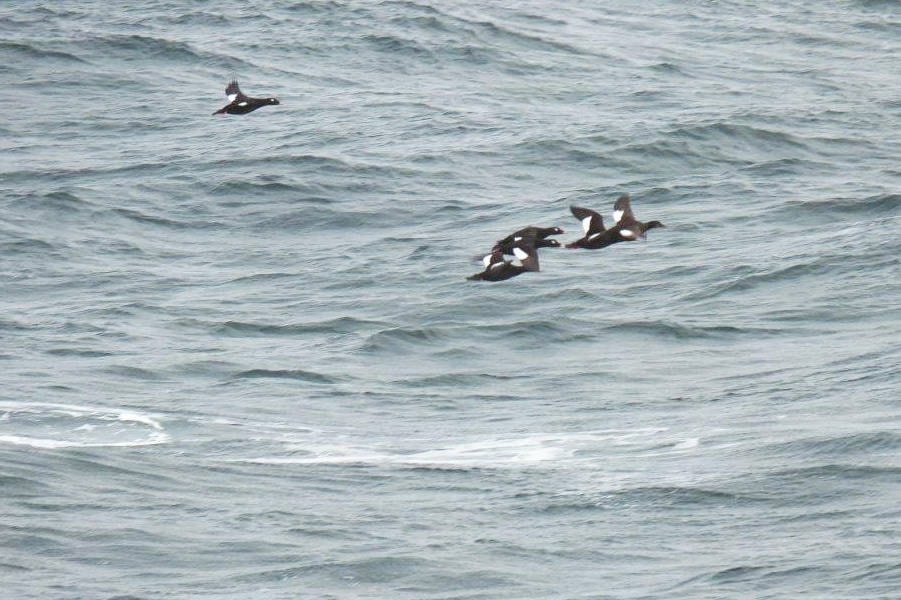By Margo Hearne
This count is always an endurance test. Will the ferry sail in daylight?
Will it sail at all in this most challenging of seas?
The strait is a shallow body of water, given to rogue waves and blistering gales. They say it’s named after a ship, but it’s really named after the Greek goddess Hecate.
According to Wikipedia, “Hecate is more at home on the fringes than in the centre of Greek polytheism. Intrinsically ambivalent and polymorphous, she spans conventional boundaries and eludes definition. Dogs were sacred to Hecate.”
So yes, here we are on the fringe of the continent, our work is not exactly conventional and yes, we even sail over Dogs Head Bank. But we’re only doing a bird count, so there is no need to get carried away.
Hecate may be uncertain but her birds are not. And there they go! 3,177 White-winged Scoters, 305 Long-tailed Ducks, 236 Pacific Loons and nine — yes nine — Yellow-billed Loons, the rarest loon in the hemisphere. They were all out there, the seas were not too choppy, there was a bit of a wind and visibility was excellent. Thirty-nine Pelagic and two Double-crested Cormorants fell away from the Lawn Point can/buoy, as did two Brandt’s Cormorants — they are difficult to identify from a distance but their size was a giveaway. Brandt’s are bigger than Pelagics and don’t have the Double-crested’s yellow bill.
Down from the Bering Sea where they nest came seven white-phase Northern Fulmars. They are heavy-headed, stocky birds, unlike the two more graceful Sooty and one Short-tailed Shearwater that also drifted over the waves. Fulmars are our home birds. As kids we watched them circle and wheel beneath us when we walked the Irish cliffs. They nested all along the steep inclines, well away from any possible human interference.
Back on the sea, 1,178 solid little Common Murres, four Marbled Murrelets, five Ancient Murrelets and six Pigeon Guillemots did their watery thing, swimming in large flocks or diving when the ship went by.
Three rare Thick-billed Murres mingled with the mob, and two Black-legged Kittiwakes joined the Mew, Herring and Thayer’s Gulls that didn’t know when to come in from the cold.
It was a very good bird day in spite of the running sea.
Thanks to the friendly crew aboard the Northern Adventure who helped us find the birds. Total species: 36; individuals 7961.
We have now done 170 CBCs over 36 years and have recorded 184 species in that time.
This year we recorded 110 species and counted 26,402 individuals island-wide. We had lots of help!
Thanks to all the volunteers who participated and helped out in any way. It would not have happened without you.
